Crown molding is a wonderful architectural element that enhances nearly every space. Sometimes understanding how to use crown molding in your space, what materials to use, and what color schemes would look best in your space can take some research. Here is a collection of tips to help you the next time you are considering adding crown molding to your home's design.
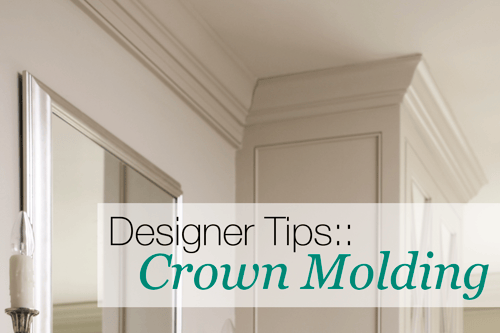
Crown molding is the ornamental mill work that is typically added to the top edge of the room covering the seam between the wall and the ceiling. It can come in a variety of sizes and shapes and is a timeless way to add style to your home.

Crown molding can be painted wood, stained wood, or made of MDF (medium density fiberboard). The choice to use wood or MDF is complex. Crown molding is traditionally made of wood, which typically has a higher price and is sometimes easier to install. However, MDF crown molding is less likely to warp than wood molding and typically has a lower price point associated with it. Rest assured, adding crown molding to your space can be a major enhancement, regardless of the crown molding's material.
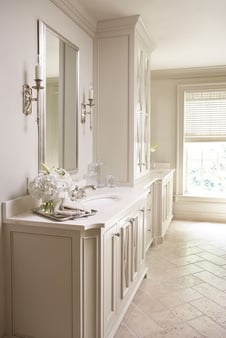
Some homeowners worry about which spaces are right for crown molding because of the room's size or shape. So when is a room too small for crown molding? We don't think any space is necessarily too small to handle the addition of crown molding. You may feel the urge to avoid adding elements like crown molding in an attempt to trick the eye into thinking a space looks bigger, but it's important to weigh the visual benefit of adding textural treatments to a room against the possibility of potentially making a small room look slightly larger. In any case, crown molding's ability to make a room feel more luxurious works consistently, regardless of the size. A room with an unusual shape can be harder to add the treatment to, but curved crown molding is available - using continuous lines around the border of an oddly shaped room can pull it together. The stairwell below is a great example of a curved crown molding adding visual detail to a space that might not always be highlighted in a design, pulling the eye up to the airy, high ceilings.
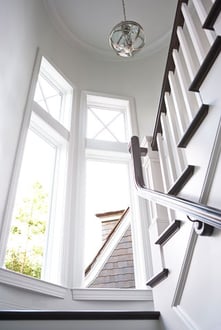
Once you know where you want to include crown in your design, you must decide how you want it to complement your space. Following are a few looks we love that you can create with crown molding.
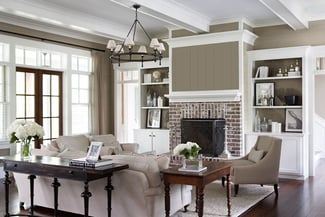
Traditional Crown molding that is lighter than the walls, especially in colorful rooms, can produce a clean, fresh sense in your home. This style is a classic look and can cover any potentially uneven paint seams between the wall and the ceiling. This gorgeous living room used several architectural details, including crown molding, in a bright, crisp white to frame the room's beautiful paint color. The walls, painted Benjamin Moore Berkshire Beige with a flat finish, are set off beautifully by the trim, which has been painted Sherwin Williams Pure White with a satin finish.
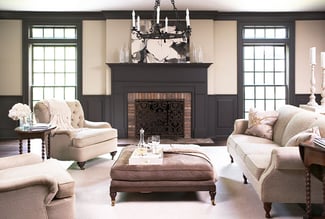
Dramatic Another look you could try with your crown molding is to paint or stain it dramatically darker than the walls. This look works especially well in rooms that are black and white or feature a neutral color palette. Doing so creates a dramatic contrast with light colored walls. Living rooms like this one, with soothing cream walls, look amazing framed by a dark crown molding. The crown in this room is painted with Benjamin Moore Night Horizon to offset the walls, which are done in Sherwin Williams Downing Sand.
Airy Lastly, you can choose to paint your crown molding, walls, and ceiling the same light color. This style allows you to highlight the beautiful architectural details in your room with different paint finishes. The use of glossier finishes on crown molding or cabinets can subtly draw the eye to featured elements of the room. The all-white look in this kitchen, painted Benjamin Moore Winter White, develops elegant textural elements with the use of a flat finish on the ceiling, semi-gloss on the cabinets and trim, and an eggshell finish on the walls.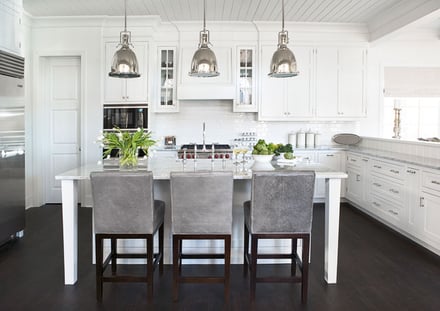
Do you have more questions about crown molding? Ask us in the comments below.
For more help with your wall design, check out our tips on paint finishes.

